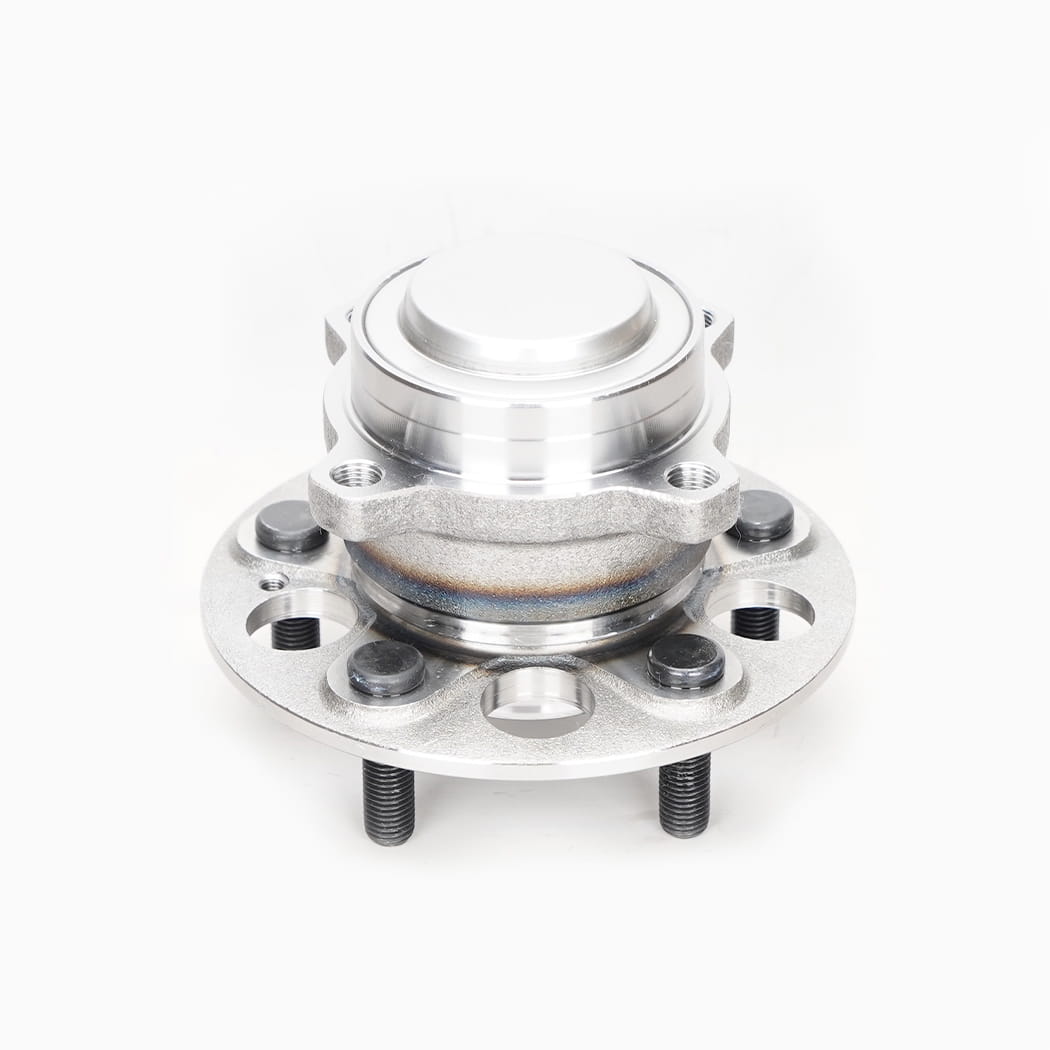The Front Hub Assembly, often simply called the wheel hub bearing, is a critical component in any vehicle's suspension and drivetrain. It serves as the mounting point for the wheel, connecting it to the axle or steering knuckle, and is indispensable for the smooth, safe, and efficient rotation of your car's wheels.
A typical Front Hub Assembly is a complex unit that incorporates several crucial parts:
The Hub: This is the housing that bolts directly to the axle or steering knuckle and provides the mounting surface for the wheel. It's drilled with holes to accept the wheel studs or bolts.
The Bearing: Contained within the hub, the bearing allows the wheel to spin with minimal friction. Modern assemblies often use tapered roller bearings or ball bearings packed with grease and sealed for life. This sealing is vital to keep out contaminants like water and dirt.
The Flange: This is the flat surface onto which the wheel mounts. It's designed to withstand the significant forces generated during driving, turning, and braking.
The primary function of the Front Hub Assembly is to allow the wheel to rotate freely and precisely while supporting the vehicle's weight and handling lateral and axial loads . It’s engineered to handle forces in all directions: up and down from bumps, side-to-side from cornering, and forward/backward from acceleration and braking.
In contemporary vehicles, especially those with Anti-lock Braking Systems (ABS), the Front Hub Assembly plays an even more integral role. Many modern units feature a magnetic encoder ring or tone ring built into the assembly. This ring works in conjunction with an ABS sensor, providing the necessary wheel speed data to the vehicle's computer. Without this accurate data, the ABS, traction control, and sometimes even the electronic stability control systems cannot function correctly. Therefore, replacing a Front Hub Assembly often requires ensuring the new part is compatible with the vehicle's sensor and ABS system.
Like any moving part subjected to stress, the Front Hub Assembly will eventually wear out. The main component prone to failure is the bearing.
Common causes of failure include:
Contamination: If the seals degrade, water, road salt, and dirt can enter the bearing, washing away the grease and causing rust and abrasive wear.
Impact Damage: Hitting severe potholes or curbs can introduce excessive force, damaging the internal components.
Normal Wear and Tear: Over time and mileage, the constant friction and load will fatigue the materials.
Improper Installation: Overtightening or undertightening the axle nut can prematurely damage the bearing races.

Recognizing the symptoms of a worn-out Front Hub Assembly is key to preventing a complete failure, which can be dangerous. The most common indicators are:
Loud Noises: A grinding, rumbling, or groaning noise that typically gets louder as the vehicle's speed increases. This is the sound of the failing bearing.
Vibration: A subtle to noticeable vibration felt through the steering wheel, which can sometimes be mistaken for an unbalanced tire.
Wobble/Looseness: Excessive play or looseness in the wheel. A mechanic can check this by rocking the wheel while the vehicle is lifted.
ABS Light: Since the assembly often houses the ABS sensor ring, a failure can sometimes trigger the ABS warning light on the dashboard.
Given its direct impact on steering, stability, and safety, selecting a high-quality Front Hub Assembly is paramount. Inferior products may fail prematurely, leading to repeated repairs. When replacement is necessary, it’s often done as a single, sealed unit, which simplifies the repair process and ensures all components (hub, bearing, and often the ABS sensor) are matched and correctly sealed. Investing in a quality Front Hub Assembly ensures the continued safety, performance, and integrity of your vehicle's wheel system.